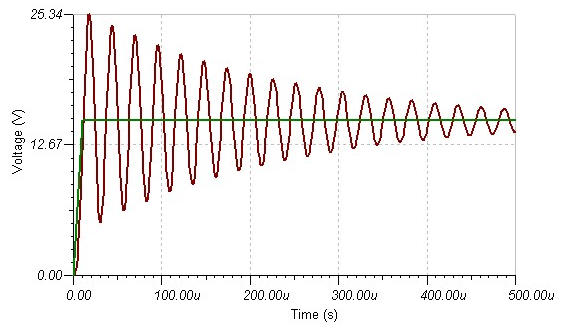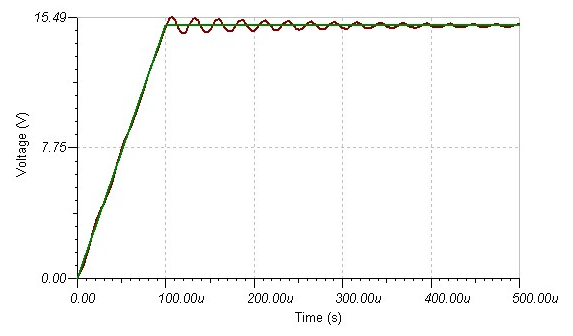For someone following along in the discussion that may be asking "What signal on the track bus? This is RailPro, not DCC. There is no signal, just pure DC on the track bus."
You are right that only DC is on a RP bus. Until the load changes and it is no longer so pure...
The "signal" that Tim and I are discussing is the momentary voltage fluctuation that occurs on a DC bus when either a load is applied or removed. This can simply be throttling up/down a loco or as severe as a wheelset causing a short circuit. Possibly more common, is the on again off again load change caused by dirty track. The signal is only present during the transition from one power level to another. It is brief. The signal goes away once voltage stabilization is achieved at the new power level. It is more accurate to call these spikes rather than signals since we are not transmitting information. But the spike effects in the transmission line (DC bus) are the same as if a continuous signal were being sent (DCC bus). The difference is how long the signal/spike is present. It only has to be present once for a split second to potentially do damage to sensitive electronics.
The problem, as illustrated in the video, is the potential for the voltage to momentarily be much higher than the system rated voltage. This extreme voltage occurs for two reasons. One is the inductance/capacitance effect (commonly abbreviated LC) produced by the bus wires which is the focus of the video. This is why we twist bus wires and provide termination at the end. The second reason, and more concerning to RP model railroading, is the length of wire run between the load (a loco) and the power supply. The voltage regulator responsible for maintaining an exact voltage on the track is located inside the power supply which is many feet away from the load. This causes a time delay between when the load changes and when the regulator makes a voltage correction. The poor regulator is always late making corrections because of the distance. The net result of the LC effect over a long bus length is the regulator first over-corrects and then under-corrects as it tries to adjust the voltage based on a signal that is time delayed. Voltage ringing occurs. Voltage ringing is the "signal" in the video and why a supposedly DC only power bus actually has a signal on it for brief periods.
Consider this scenario: A train is moving along level track at a steady speed. The load on the power bus is stable, no load change occurring. Since no load change then no signal on the buss. The power supply voltage regulator is maintaining the correct track bus voltage. All is well. Then you throttle up a lash of 6 locos with a heavy train. The lashed-up locos add a 6 fold load increase on the bus because of their combined large current draw. As current goes up, voltage goes down. The voltage "signal" propagates down the bus. By the time it reaches the regulator the LC bus effect has made the low voltage even lower. The voltage regulator senses the low voltage and attempts to ramp it up. But it is doing the ramp up based on an erroneous exaggerated voltage reading causing it to over-correct. The same happens when the over-corrected voltage signal comes back high. Back and forth the regulator goes, each time getting closer to correct, until finally the track bus voltage is stable under the new load (1 train + the 6 unit train). This is the ringing. The illustration below is conceptually what the voltage on the track bus looks like immediately after the 6 loco lash-up was throttled. For illustration purposes let's say the combined load momentarily drops the track voltage clear to zero. The green line is what we want to happen, the brown line is what is actually happening.

By adding resistance termination to the bus we get this:

Is all this electronics techie crap really necessary just to run trains? Obviously it is not. RP modules have proven themselves to be exceptionally tolerant of bus voltages. Is it worth considering? Quite possibly, if your layout is large (long bus wires, many trains) and most importantly you are hell bent on making your layout operate as well as possible (no fried electronics). That would be me.
